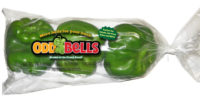Converters Section: Converting
Data Collection Leads to Less Waste in Package Converting


|
| Shown here is the Techkon SpectroEdge for web inspection. |
What consumers see on a store shelf are the graphics, colors and designs a brand owner has chosen to make their product stand out from the crowd. What they don’t see is what goes into creating packaging that ensures the product inside is safe and protected – the converting process.
Package converting aims to improve efficiency, make safer products and cut waste, which benefits both budgets and the environment. But a significant method of reducing waste is often overlooked: Instituting a solid data collection and management system that defines, measures, and minimizes waste.
The success of arriving at a consistent and high-quality end product is predicated by the institution of a measurement plan that controls data. Data collection, by its nature, requires interpretation, meaning employees may understand the same information differently. What can converters do to ensure consistency? Institute a measurement program with strong guidelines for data evaluation, with the aim of leaving as little as possible open to interpretation.
Best Practices in 3 Steps
A program of best practices to reduce waste has three main elements: the establishment of a controlled environment; a target; and a determined tolerance for data results. In addition, having a plan for identifying data that falls outside of the established tolerance, along with a corrective action program, will help pinpoint problems and establish a method for resolution before the product reaches the customer.
A controlled environment includes a number of elements. First, employees must be educated as to their role and that of their co-workers, which enables efficient communication and transfer of work and product between departments. For each piece of equipment, Standard Operating Procedures should be established, along with a Preventative Maintenance Program. Several employees should be trained to operate each machine, and they should also have a solid understanding of the raw materials being used, and how changing one or more of them could affect the rest of the process.
Second, a target must be established for raw materials coming in, and final products going to the next stage of the manufacturing process. Each system must have a defined target set, or there is no ultimate goal.
Last, the determined tolerance refers to the margins around a target or goal that are acceptable for a job. Setting up a pass/fail tolerance is important in helping employees make decisions about the quality of a product, and its ability to perform in the next stage of manufacturing. A good way to do this is by instituting quality checkpoints for each stage of the converting process, with clear directions for employees regarding what actions to take for both good and bad product. Having a documentation system for this is advantageous, so tolerances can be tracked and analyzed, and that information can be used to improve efficiency of future jobs.
The 3 Ps: Proofing, Platemaking and Press
Configuring an accurate proofing model is one of the most important steps for interpreting print color in the days or weeks before a job goes to press. Predicting accurate color is essential in order to set a job color target, and to generate a predictable proof to press match, the press room must be consistent when creating color profiles and running live work.
The main functions in the plate department include laser imaging, exposure, and processing. Implementing quality control checks in the platemaking department will help ensure that all equipment is functioning correctly. Operators should check raw materials for gauge, laser ablation (to ensure clean imaging), UV lamps for proper and consistent exposure, and general cleanliness and care of the plate processor. Then, using a plate measuring device to assess a few measurements on a control strip will confirm (or not) that the platemaking equipment is working correctly. If any defects are found in the final print, it will be easy to determine that the plate room is not the culprit.
The core functions of the press department include job make-ready and job approval, plus verification of print consistency over the length of the run. While make-ready preparation times can vary, instituting a standard procedure for operators to follow is important. This should include inspection of raw materials and tooling, such as substrates, anilox (linescreen, clean volume), ink (viscosity, temperature, color consistency), press speed, stickyback, press-room temperature, sleeve/
cylinder consistency.
Checking color at the beginning as well as throughout the extent of the run is equally important. Handheld devices for density, dot gain, gray-balance and spectral color data are available, and it’s important that the operators and approvers know how to use and troubleshoot measurement devices. Fairly new to the market are web-inspection color measurement devices that can dial into areas on the printing web and collect measurements throughout the length of the run. These devices can measure and record information in Process Color inks, as well as Spot colors, and warn the press operator when any of the inks is out of tolerance. Once collected, either by hand or via web-inspection, software applications are available that can direct the operator to a better match, or store the color information history for comparison and setting targets for future jobs. This makes the process of repeating and verifying consistency over the life of the run relatively painless.
Finally, the overall approval process, while the last step, is just as important in ensuring that a waste reduction program is effective. Setting guidelines pertaining to who is qualified to mark the final job approval and the qualifications required for approval ensures that only good product is leaving the production floor. This may be the most important role in the factory, as this person is the gatekeeper between manufacturing and the consumer.
Anderson & Vreeland
(866) 282-7697; andersonvreeland.com
Looking for a reprint of this article?
From high-res PDFs to custom plaques, order your copy today!





